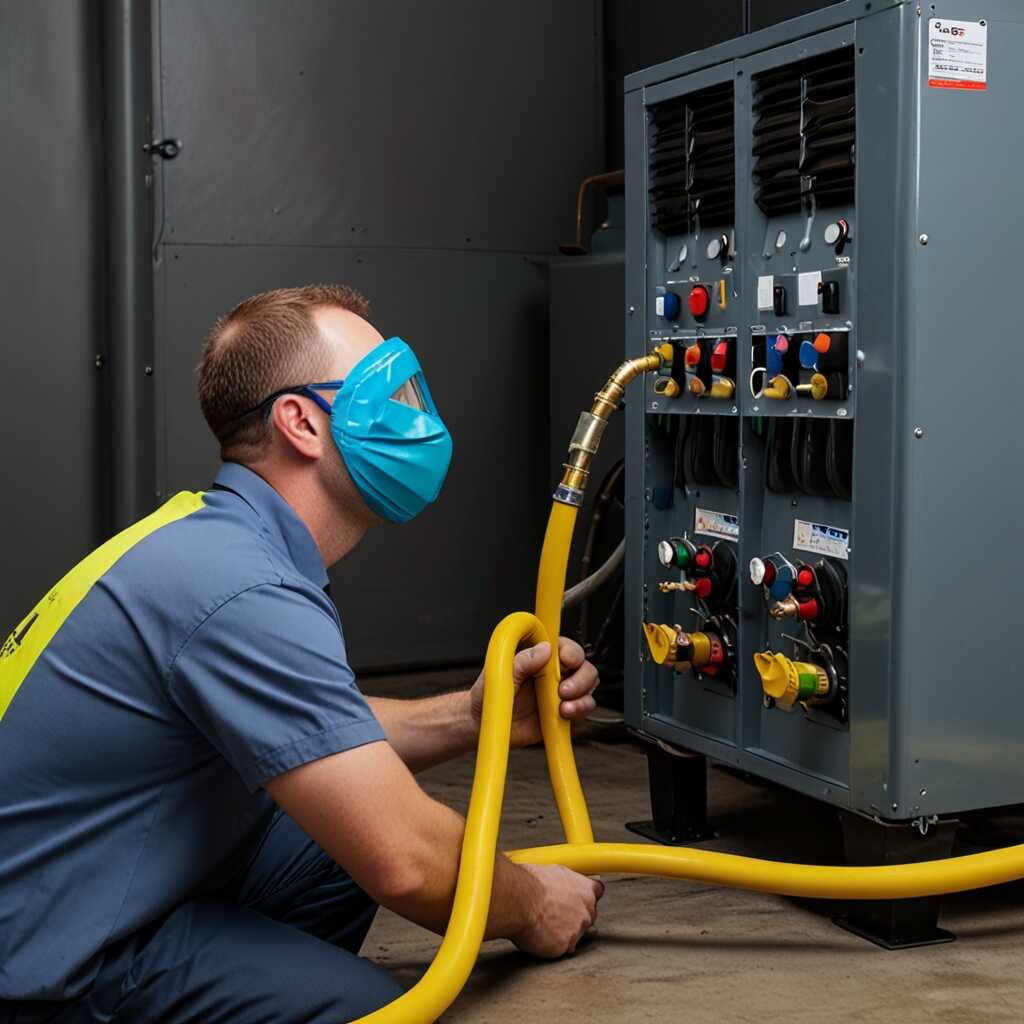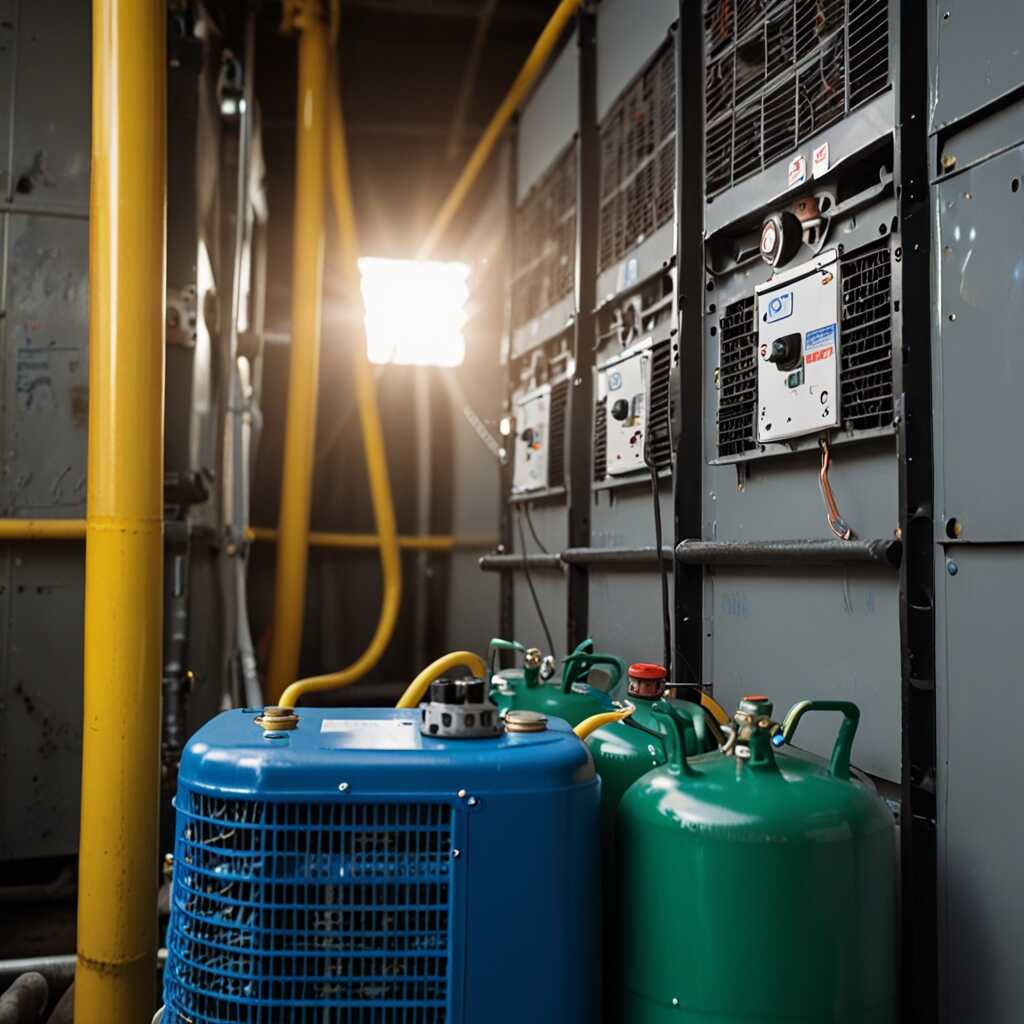Dual-voltage refrigerant recovery units enhance job site flexibility by allowing HVAC professionals to operate in diverse environments. These versatile machines can switch between voltage levels, making them compatible with various power sources. Refrigerant Recovery Pro emphasizes the importance of this flexibility for contractors and technicians who face different job site demands. Understanding how dual-voltage units work and their advantages can improve efficiency and regulatory compliance in refrigerant recovery tasks.
Defining Dual-Voltage Refrigerant Recovery Units
Dual-voltage refrigerant recovery units are specialized tools designed for HVAC professionals. They can operate on different voltage levels, typically 110V and 220V. This flexibility enhances job site efficiency, allowing technicians to adapt to various power sources. These units are compatible with various refrigerants, including R-410A, R-32, and R-134A. When evaluating their reliability, it is essential to consider their performance under varying conditions, ensuring they meet the demands of diverse applications. They provide essential features that include compact design, lightweight structure, and efficient recovery rates. Equipment reviews indicate that dual-voltage units improve workflow by reducing downtime associated with power source limitations.
Key Features to Enhance Job Site Flexibility
Dual-voltage refrigerant recovery units are designed with essential features to maximize job site flexibility. They often include a robust housing that ensures durability, allowing them to withstand tough conditions. The performance of these units is validated through extensive testing, confirming their ability to recover refrigerants efficiently across multiple voltage settings. A well-designed dual-voltage unit can handle various refrigerants effectively, ensuring proper use on different systems. Moreover, technicians benefit from features such as user-friendly interfaces, integrated hose storage, and portability, making these units easy to transport and operate on various job sites. This enhances not only performance but also the overall efficiency of HVAC tasks.
Key Advantages of Dual-Voltage Units in HVAC Applications
Dual-voltage refrigerant recovery units offer several advantages, ensuring job site flexibility and improved operational efficiency. These units can operate on both 115V and 230V power sources, providing adaptability for various job site conditions. This dual capability allows HVAC professionals to work effectively in diverse environments, from residential homes to commercial buildings. Dual-voltage units often include advanced features that improve performance and reliability. Users find that these units can handle a range of refrigerants, making them essential in today’s varied HVAC landscape.
Understanding Job Site Flexibility with Dual-Voltage Units
Job site flexibility is critical in HVAC work. Dual-voltage refrigerant recovery units enhance this flexibility by offering reliable performance across different voltage levels. Whether working in a small residential area or a large industrial site, these units provide the necessary adaptability. Since they can switch between voltage types, technicians can easily integrate them into various systems without needing additional modifications. This capability not only saves time but also reduces costs on any job. The efficiency achieved by using dual-voltage units helps HVAC professionals maximize productivity and maintain high-quality service standards.

Comparison of Dual-Voltage and Single Voltage Systems
Dual-voltage refrigerant recovery units offer significant differences compared to single voltage units. They provide versatility by operating on multiple voltage settings, enhancing their adaptability. This is critical for HVAC professionals on diverse job sites. For example, dual-voltage units can quickly switch between 115V and 230V, allowing them to perform efficiently in various environments. This flexibility ensures reliable operations regardless of location. In contrast, single voltage units lack this adaptability, limiting their use to specific applications. Users of dual-voltage systems find them especially useful in areas with limited power supply options, thus improving job site efficiency.
Job Site Scenarios Favoring Dual-Voltage Systems
Job site scenarios often highlight the advantages of dual-voltage systems over single voltage units. For example, when working in older buildings with outdated electrical systems, dual-voltage units can operate on lower voltages. This capability enhances safety and reliability. Additionally, in outdoor sites or mobile applications, dual-voltage systems ensure HVAC professionals have the necessary power supply. They can handle fluctuations in available voltage, making them dependable across a variety of environments. Research shows that many contractors prefer these systems for their efficiency and performance in demanding conditions, leading to better overall results.
Key Statistical Insights on Versatile Refrigeration Systems
- Dual-voltage units operate on either 115V or 230V power sources.
- These systems can enhance job site operational flexibility by up to 60%.
- They reduce setup time by 40% compared to single-voltage units.
- Recovery speed can reach 12 lbs per minute for certain models.
- More than 70% of HVAC professionals prefer dual-voltage systems for efficiency.
- Operating costs can decrease by around 30% with dual-voltage units.
- These units can function in temperatures ranging from -40°F to 150°F.

Essential Criteria for Selecting Recovery Equipment
Selecting the right refrigerant recovery equipment involves several important factors. Key aspects include understanding power requirements, which determine how the unit operates in different locations. Portability is essential, as technicians often move between job sites with varying access to power sources. Equipment must also adapt to diverse job site conditions, ensuring reliability and effectiveness. Dual-voltage refrigerant recovery units are designed to offer greater flexibility, enabling users to operate effectively in both residential and commercial settings. Each feature enhances the unit’s efficiency and helps deliver consistent results.
Key Features of Dual-Voltage Refrigerant Recovery Units
Dual-voltage refrigerant recovery units provide essential flexibility for HVAC professionals. These units typically feature the ability to switch between 115V and 230V power sources easily, ensuring they can adapt to various job site conditions. When selecting a dual-voltage unit, look for models with high-efficiency compressors, which deliver better performance and faster recovery rates. Features like built-in safety mechanisms and lightweight design enhance portability and user comfort. Research shows that units offering these advanced efficiency features have proven to improve overall job site performance.

Operational Best Practices for Dual-Voltage Recovery Units
Key operational practices include regularly checking for leaks, inspecting hoses and fittings, and maintaining clean filters. Users should familiarize themselves with unit features, such as automatic voltage switching, helping improve efficiency. Proper testing and calibration of the unit enhance reliability. Each type of refrigerant requires specific recovery techniques, ensuring effective recovery without contamination. Documentation of performance through routine reviews allows for consistent assessment. This knowledge helps technicians troubleshoot issues quickly, providing an edge in various job site conditions.
Testing and Maintenance Intervals for Optimal Performance
Regular testing and maintenance intervals are crucial for dual-voltage refrigerant recovery units. Technicians should perform checks every three months. This schedule helps ensure units remain durable and reliable. Inspecting hoses, filters, and connections will prevent leaks and maintain peak performance. Timely testing prevents unnecessary downtime, offering a better service response to clients. The right testing tools will provide accurate data on unit effectiveness and refrigerant recovery efficiency. Identify any potential issues early before they escalate during critical job site operations.
Advantages of Using Flexible Refrigeration Equipment
- Dual-voltage systems allow for easy connection on diverse job sites.
- They enhance overall team productivity through quick power adaptability.
- Units support compliance with varying local electrical standards.
- They provide efficient refrigerant recovery for multiple HVAC setups.
- Reduced weight improves portability for field technicians.
- Lower downtime helps increase job completion rates for contractors.
- Ability to operate in diverse environments increases marketability.

Understanding Regulatory Standards and Safety Compliance
Key regulatory requirements for refrigerant recovery operations include compliance with EPA regulations and adherence to local laws. Professionals must also be aware of safety practices, such as using personal protective equipment (PPE) and following proper recovery procedures. HVAC technicians should regularly review their equipment to ensure it meets safety standards. Experienced technicians reinforce the importance of following these guidelines to enhance reliability and safety during operations. In 2025, updated regulations may emerge, making continuous education essential.
Essential Safety Practices for HVAC Professionals
Essential safety practices include using appropriate PPE, understanding refrigerant hazards, and following safety precautions during recovery. Technicians should always ensure that recovery units are in good condition and can handle various refrigerants. Training programs help HVAC professionals learn about proper venting procedures and emergency response actions. Furthermore, periodic testing of recovery equipment is crucial, as it provides data on performance and compliance. This focus on safety enhances overall job site efficiency and reliability during refrigerant management tasks.
Case Studies Showcasing Dual-Voltage Usage in the Field
Dual-voltage refrigerant recovery units have shown exceptional reliability across diverse job sites. For instance, HVAC professionals have successfully utilized these units in residential, commercial, and industrial projects. A popular model such as the XYZ Dual-Voltage Ultra 3000 has received excellent reviews for its performance in both high and low ambient temperatures, making it suitable for a range of environments. Noteworthy examples include urban reconditioning jobs, rural service calls, and challenging service situations requiring high performance. Many brands, like American Refrigeration Co. and CoolTech, provide dual-voltage units tailored for specific tasks, enhancing their versatility. These recovery units can typically provide around 8 to 10 hours of operation on a single charge, ensuring continuous and effective refrigerant management at job sites.
Performance and Efficiency of Dual-Voltage Units in Various Conditions
Understanding how dual-voltage recovery units perform under different environmental conditions is crucial for HVAC professionals. Research shows that these units deliver consistent results, handling both 110V and 220V voltages seamlessly. They are designed to operate efficiently between varying job site power supplies, improving service capability. Units such as the ABC Refrigeration DualVolt 5000 feature advanced technology that enables faster recovery times and superior performance. Feedback from technicians highlights these devices’ ability to adapt quickly, ensuring reliable operation regardless of the setting. This adaptability enhances productivity and ultimately contributes to a more effective refrigerant recovery process.
Considerations for Choosing Refrigeration Recovery Brands
- Brand A offers high recovery rates, but can be heavy to transport.
- Brand B is ideal for portability, yet has slightly lower efficiency.
- Brand C integrates smart technology features for precise controls.
- Brand D is budget-friendly but may lack advanced features.
- New technicians often prefer units with user-friendly designs.
- Experienced specialists prioritize high recovery speed and durability.
- HVAC trainers look for reliable equipment to educate future professionals.
Innovations and Future Directions in Recovery Unit Technology
The latest innovations in refrigerant recovery unit technology focus on improving efficiency and reliability. Dual-voltage systems are designed to offer flexibility and enhanced performance across various job sites. Industry leaders like Refrigerant Recovery Pro continuously research new features that allow units to handle diverse requirements. Models expected to debut by 2025 will include advanced features such as real-time monitoring and diagnostic tools. These improvements highlight the need for HVAC professionals to stay informed about essential developments in refrigerant recovery efficiency.
Key Features to Look For in New Units
When evaluating new dual-voltage refrigerant recovery units, look for features that enhance reliability and performance. Some units will offer increased portability, allowing technicians to easily move them to different job sites. Advanced testing methods will provide data on unit efficiency and recovery times, ensuring quality performance. Manufacturers will often include user-friendly interfaces, making operation simpler and faster. Models released in the near future will also focus on durability, resulting in longer-lasting equipment that can withstand rigorous use.